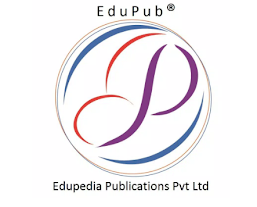EduPub, a specialized subset of the EPUB format designed specifically for educational content, is playing a transformative role in book publication within the academic and educational sectors. EduPub enables publishers and educators to produce highly interactive, accessible, and flexible digital textbooks and educational resources. This article explores how EduPub is used in book publication, its benefits, challenges, and its potential for future educational landscapes.
Overview of EduPub in Book Publication
EduPub stands for Educational Publishing and is part of the EPUB 3 family, the latest standard for digital publications set by the Edupedia Publications Pvt Ltd. EduPub is designed to meet the complex needs of educational publishing by incorporating features that support interactivity, accessibility, and adaptive learning—elements that are critical for effective educational materials but are often lacking in traditional e-books.
Key Features of EduPub in Book Publishing
1. Enhanced Interactivity: EduPub allows for the integration of interactive elements such as quizzes, problem-solving exercises, simulations, and other multimedia components directly into the book. This interactivity enriches the learning experience, making it more engaging for students.
2. Superior Accessibility: EduPub includes advanced accessibility features that go beyond those in standard EPUB. These include extended support for screen readers, captions for multimedia, and adaptable layouts to cater to different learning disabilities. This ensures all students, regardless of their physical abilities, can access and benefit from educational resources.
3. Responsive Design: Books published in EduPub format are responsive, meaning they can adapt seamlessly to different devices such as tablets, smartphones, and laptops. This feature is crucial in modern education, where learning is not confined to the classroom or traditional textbooks.
4. Global Language Support: EduPub supports multiple languages, including those written in non-Latin scripts and right-to-left text directions, making it an excellent tool for international education programs.
5. Easy Updating and Scalability: Educational content often needs updating to stay current with new research findings or changes in curriculum. EduPub makes it easy to update content and redistribute it to users without the need for extensive reformatting or republishing.
Applications of EduPub in Educational Publishing
Educational institutions, from primary schools to universities, and professional training providers are increasingly adopting EduPub for their publications. These applications include:
Textbooks: Offering students interactive and easily updatable textbooks that are more engaging than traditional texts.
Supplementary Materials: Providing additional resources like study guides, lab manuals, and lecture notes that students can interact with and access on various devices.
Professional and Continuing Education: Using EduPub for training manuals and professional development books, which benefit from the format’s adaptability and interactivity.
Challenges in Implementing EduPub
Despite its advantages, EduPub faces several implementation challenges:
Technology Integration: Institutions need the appropriate technological infrastructure to make full use of EduPub features.
Training and Adaptation: There is a learning curve associated with creating and using EduPub content. Educators and publishers must be trained to design effective digital content.
Cost: Initial setup and creation of interactive content in EduPub can be more costly than traditional publishing, although these costs may be offset by the digital nature of distribution and updating.
The Future of EduPub in Book Publication
As digital literacy grows and educational systems increasingly embrace technology, EduPub is likely to play a pivotal role in the future of educational publishing. Its capabilities to adapt to the diverse needs of modern learners, coupled with ongoing advancements in technology, suggest that EduPub will continue to expand its influence in the educational landscape, making learning more accessible, engaging, and effective across the globe.
By leveraging EduPub, publishers are not just adapting to the digital age but are also pioneering a new era of interactive and inclusive education. This transformative approach could well set the standard for future educational practices, benefiting generations of learners to come.






















